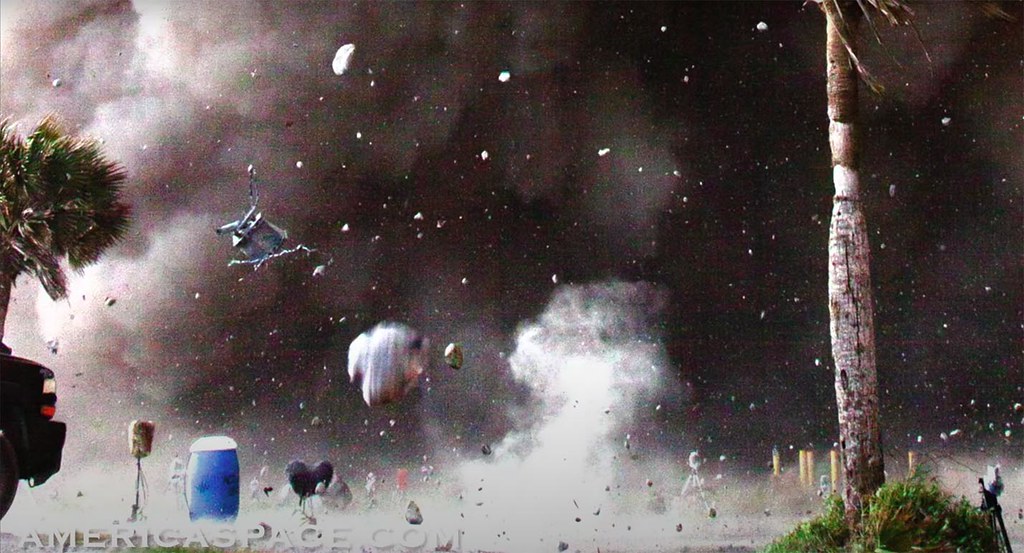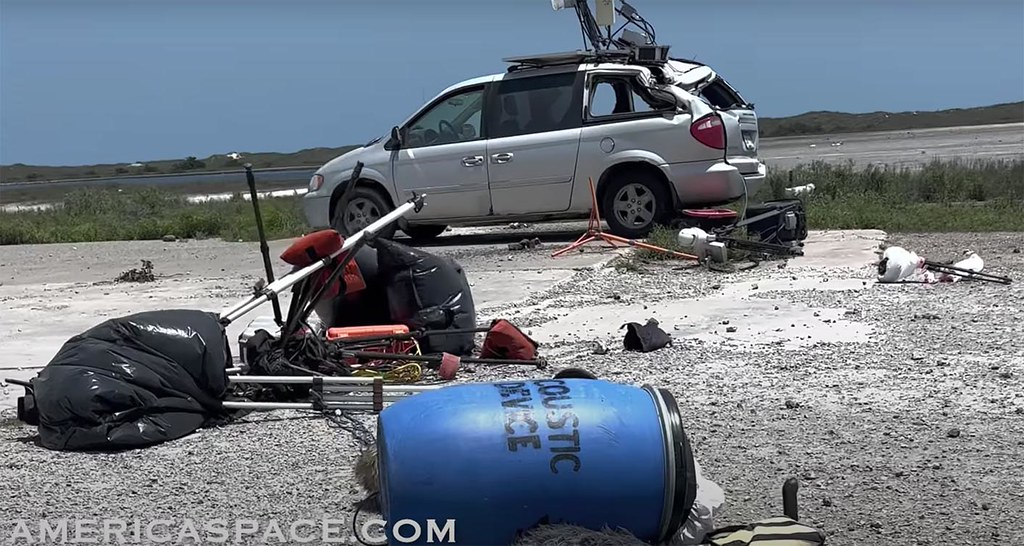A walk through the destruction of the launch of the big Starship SN24 rocket in Boca Chica
On April 20, the Starship SN24, the largest rocket in the history of the space race, exploded after its launch.
That same day we saw here the impressive launch. One of the most striking details in the video is the reference to the enormous amount of smoke and dust it generated. It should be noted that the launch pad for the SpaceX Starbase in Boca Chica, in Texas, was built without flame diverters, some tunnels that exist at the bases of the NASA launch pads that help to reduce the expulsion of material and also to reduce the sound.
The consequences of the Starship launch pad design have been rather negative. Some pieces of concrete from the platform were thrown up to a distance of 10 kilometres, causing damage to the warehouses at the base and to cars parked nearby. Also, in the town of Port Isabel, 10.5 km from Boca Chica, the launch broke windows of homes and businesses, as well as causing a rain of sand.
Some days ago, the channel AmericaSpace posted a video taking a tour of the immediate vicinity of the launch pad, noting the following: "The liftoff on April 20 caused significant damage to the pad, surrounding refuge & even the rocket itself." The video shows some of the damage recorded:
The video has some very shocking images. One of them is this photo taken during the takeoff of the Starship, in which we see the pieces of concrete thrown from the platform.

A vehicle damaged by objects thrown from the Starship's takeoff. On the left we see a fallen tripod, probably with recording equipment.

One of the cameras used to record the takeoff. This equipment alone is thousands of dollars thrown away. However, this is relatively within the norm. NASA also invests a lot of money in cameras to record its launches, cameras that in many cases are useless. The important thing is that the cards with the photos and videos can be recovered.

The tanks located near the launch pad, with the dents caused by objects thrown in different directions.

Two pieces of concrete thrown hundreds of meters from the platform. In the sand you can see the trace they left when they were thrown.

|
Don't miss the news and content that interest you. Receive the free daily newsletter in your email: Click here to subscribe |
- Lo más leído
- A large collection of Volkswagen cars hidden in an abandoned mine in Switzerland
- The supermassive black hole of Phoenix A, the biggest known light-devouring monster
- Sabbione: a beautiful Swiss town that looks like something out of 'The Lord of the Rings'
- Kowloon, the city that had the highest population density record in the world
- The unknown Soviet female cosmonaut who died on a mission: history or hoax?
- The MRU, a mysterious underground city of nazi Germany with 80 km of tunnels
- The 'Bomber Glacier': The wreckage of a B-29 on a remote mountain of Alaska

 EN
EN





Opina sobre esta entrada: